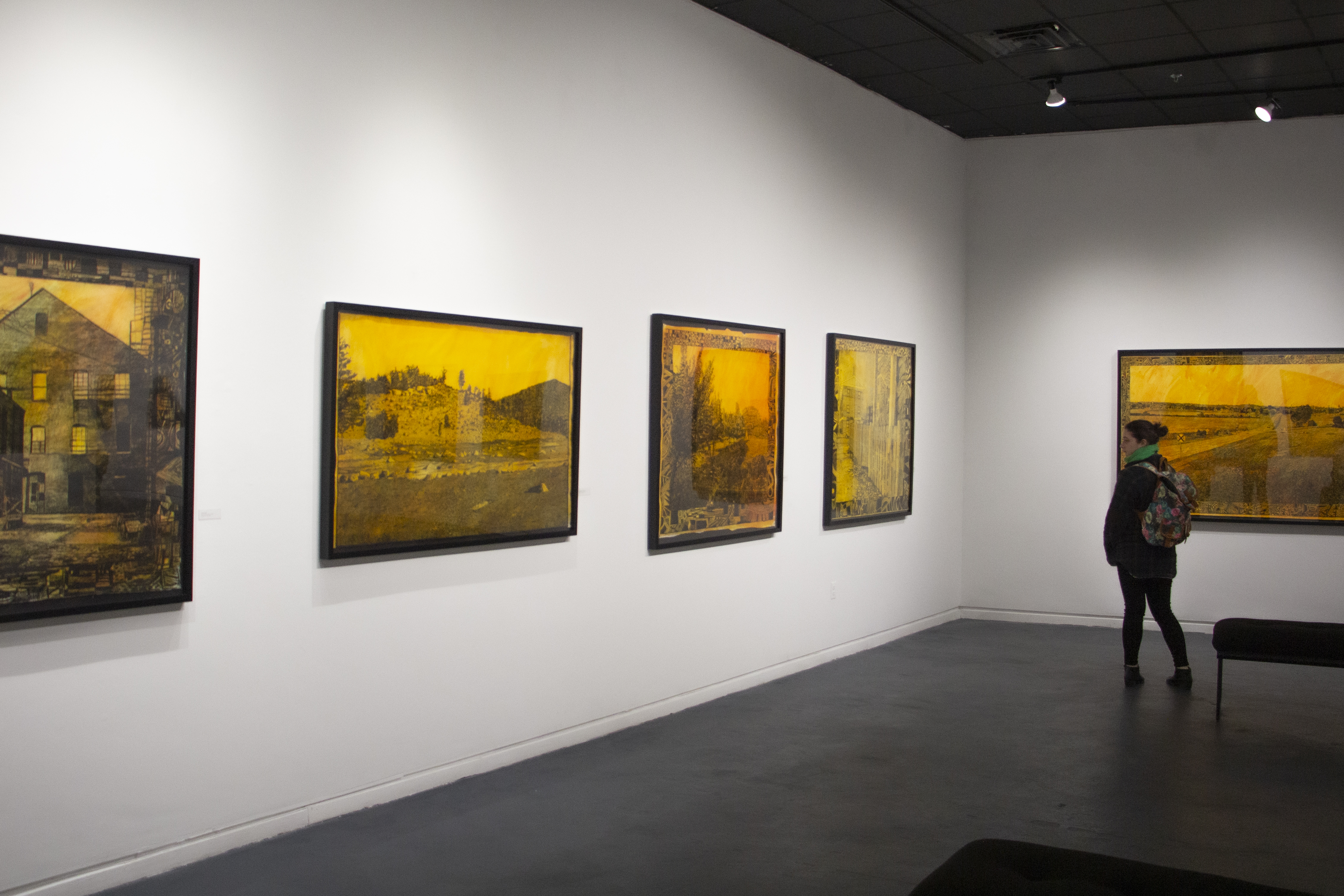Students and faculty are welcome to view the “The Yellow Art 1989-2019” exhibit by Mark Mahosky. Photo by Greg Clark.
For the next month, artist Mark Mahosky’s exhibit featuring 21 charcoal drawings that depict settings of what were once bloody battlegrounds can be seen in the Fine Arts Center’s Main Gallery.
Mahosky’s “The Yellow Drawings 1986-2019” contains drawings on paper with a deep yellow acrylic background and abstract borders, depicting settings that are now serene but weren’t always that way. Each drawing is from battlefields and sites significant to the American Civil War.
Interested in the Civil War since he was a child, Mahosky composed the first drawing when he was an undergraduate at Tyler School of Art in 1984. He continued to make these drawings for the past 30 years, only beginning to show them to the public for the past two years.
Professor Ben Anderson from the department of art and art history stated that each of Mahosky’s drawings have a specific title which correlates to the place and significant event to the Civil War.
“He would go there and he would make those drawings and would incorporate present day aspects of the area into the spots that were significant to the Civil War,” Anderson said. “They’re haunted spaces. I’ve been there a long time ago and it’s interesting to see them now and to think about how we’ve come in terms of what is there now and see how they have transformed.”
Anderson discovered Mahosky when he was in a gallery in Philadelphia and invited him to present his work at URI. Mahosky proposed the idea for “The Yellow Drawings” and while Anderson was unfamiliar with the pieces, he stated that he is very happy with the exhibit.
“I’ve seen students interact solely on the craftsmanship and how they’re made, I’ve seen them interact with the imagery and the impact overall installation, I think they think about the content and the subject matter too and how it relates to them and how we view history and think about history as time passes and how it evolves and how things don’t change and do change,” Anderson said.
Sophomore Ekarath Seneth who is studying art, attended Mahosky’s reception for the opening of the exhibit and found the drawings to be insightful and inspiring to his personal work.
“For me the archival process was very impressive because usually when I do a body of work I finish it and appreciate it for maybe a week or so,” Seneth said. “Then I’m on to the next where as he made a piece of work and extended it for his whole life really.”
Seneth described Mahosky’s drawings as though one is looking at a railroad sign with the bright yellow background, abstract borders and charcoal captivating a sense of calmness yet loneliness.
“When you see them they pop out,” Seneth said. “It had a sense of calmness, nostalgia, like I had already been there before.”
At the end of the opening exhibit’s reception, Seneth said that Mahosky felt that the life of an artist is not an easy one, but it’s a great one.
“It gave me motivation and inspiration,” Seneth said. “It inspired me to create a body of work that’s really meaningful to you and that leaves a legacy instead. I think that’s one of the most important aspects of creating a body of work.”
Anderson believes that Mohosky’s exhibit is very important and a great exhibit for students to see.
“I think it’s a really important show, you’re seeing a concentrated effort of work that’s gone on for a great amount of time, it may not be consistent but I think it’s a really powerful show,” Anderson said.




